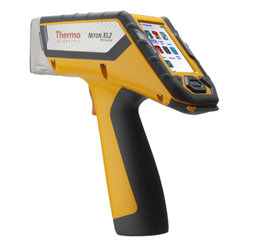
JCK – The Jewelry Trade’s Most Important Global Gathering
The JCK show provides the world’s jewelry trade community with the optimal stage for business growth by uniting the industry in one location – fabulous Las Vegas.

Using a specific gravity scale to determine the authenticity and purity of gold bars and coins is a common practice in the jewelry industry. Because most tests performed are only testing the surface, a specific gravity test verifies the content of the piece being tested. Specific gravity is the ratio of the density of a substance to the density of a reference substance. For precious metals, the reference substance is usually water. Pure gold has a specific gravity of 19.32.
1. Prepare the Scale: Make sure your specific gravity scale is calibrated and set up correctly. Follow the manufacturer’s instructions for this.
2. Weigh the Gold: Using a precise scale, weigh the gold item in grams.
3. Record Weight and Dimensions: Note down the weight of the gold item, as well as its length, width, and height. This information will be used to calculate its volume.
4. Calculate Volume: Use the dimensions you recorded to calculate the volume of the gold item. For example, if you have a rectangular bar, multiply its length by width by height to get its volume.
5. Submerge in Water: Fill a container with water and place it on the specific gravity scale. Make sure the container is deep enough to fully submerge the gold item.
6. Measure Displacement: Carefully submerge the gold item into the water, making sure no air bubbles are trapped. Note the change in water level on the scale. This change represents the volume of water displaced by the gold item.
7. Calculate Specific Gravity: Divide the weight of the gold item by the weight of the water it displaced. This will give you the specific gravity of the gold item.
8. Compare with Standard: Compare the specific gravity of your gold item with the standard specific gravity of pure gold, which is 19.32. If the specific gravity matches or is very close to this value, it indicates that the gold is likely pure. If it deviates significantly, it may suggest the presence of impurities, or a different metal alloy is present.
9. Interpret Results: Use the specific gravity measurement along with other tests, such as visual inspection, hallmark verification, and acid testing, to determine the authenticity and purity of the gold item.
Gold: Approximately 19.32 g/cm^3
Silver: Approximately 10.5 g/cm^3
Platinum: Approximately 21.4 g/cm^3
Palladium: Approximately 12.0 g/cm^3
These values can be useful in various applications, such as determining the purity of metals or calculating their weight by displacement.
Remember, while specific gravity testing can provide valuable information, it’s often used in conjunction with other testing methods to ensure accuracy and reliability.

The JCK show provides the world’s jewelry trade community with the optimal stage for business growth by uniting the industry in one location – fabulous Las Vegas.


The Thermo Scientific Niton XL2 100 is the most reliable and widely used instrument for precious metal testing.